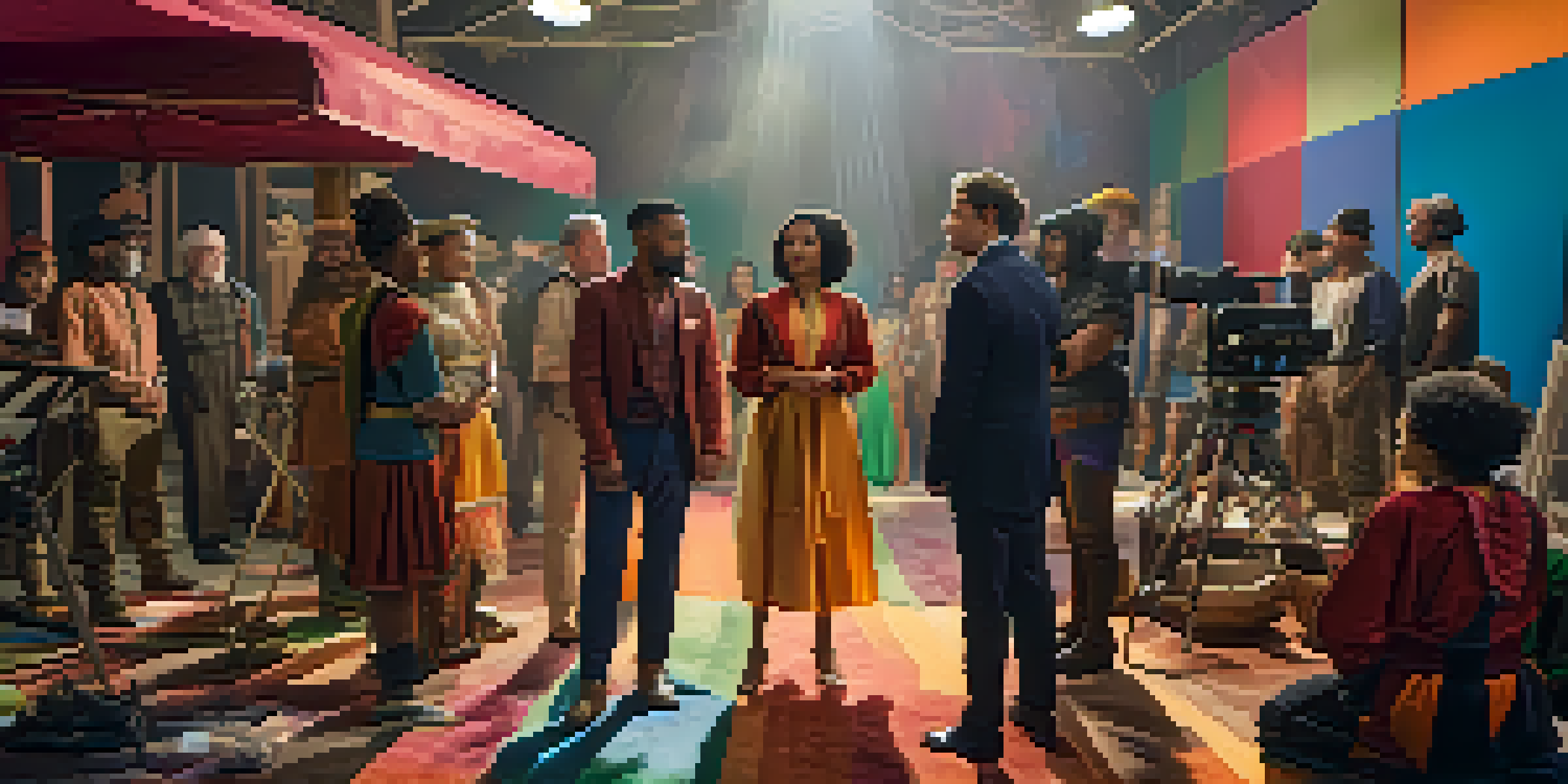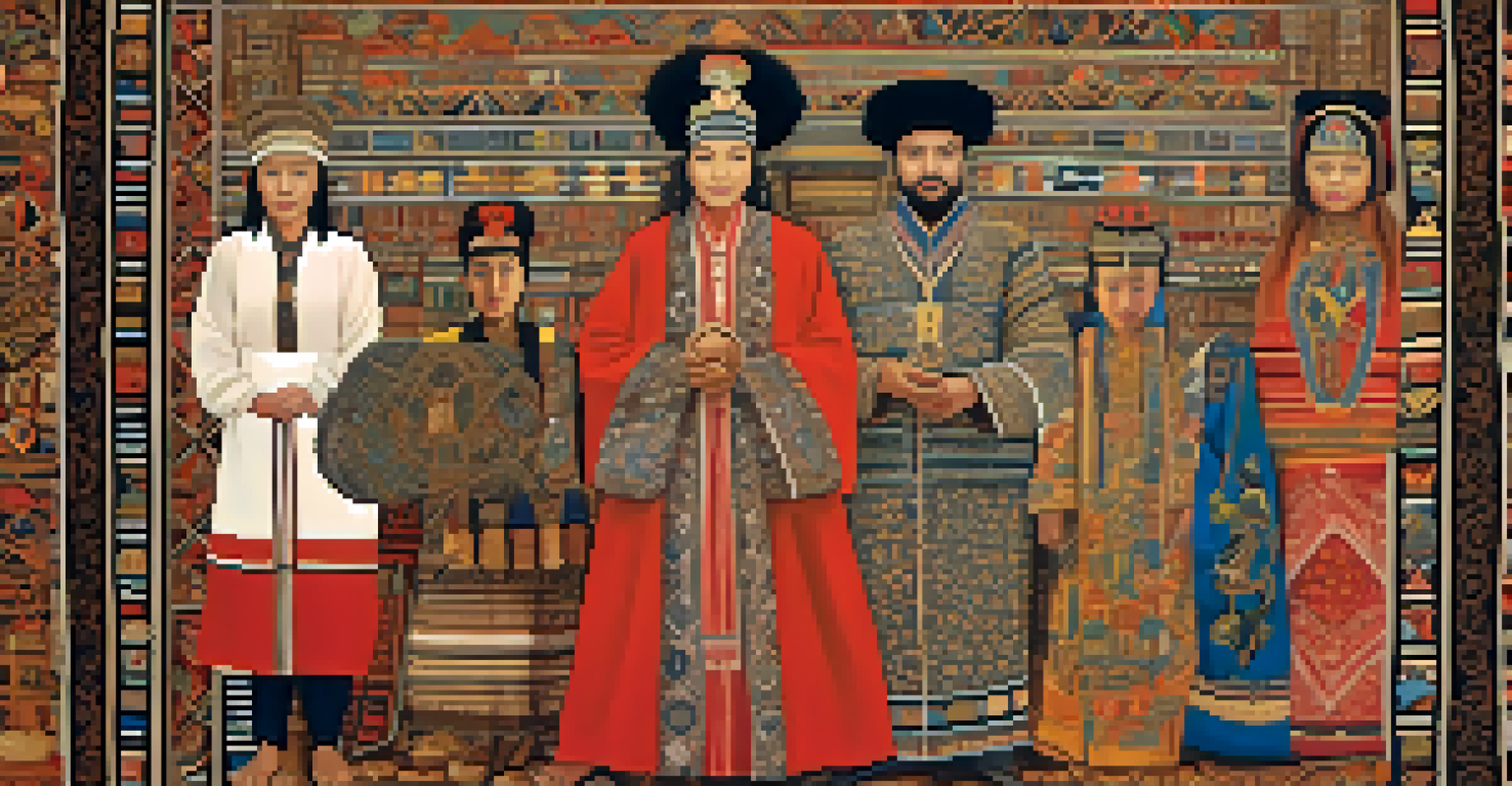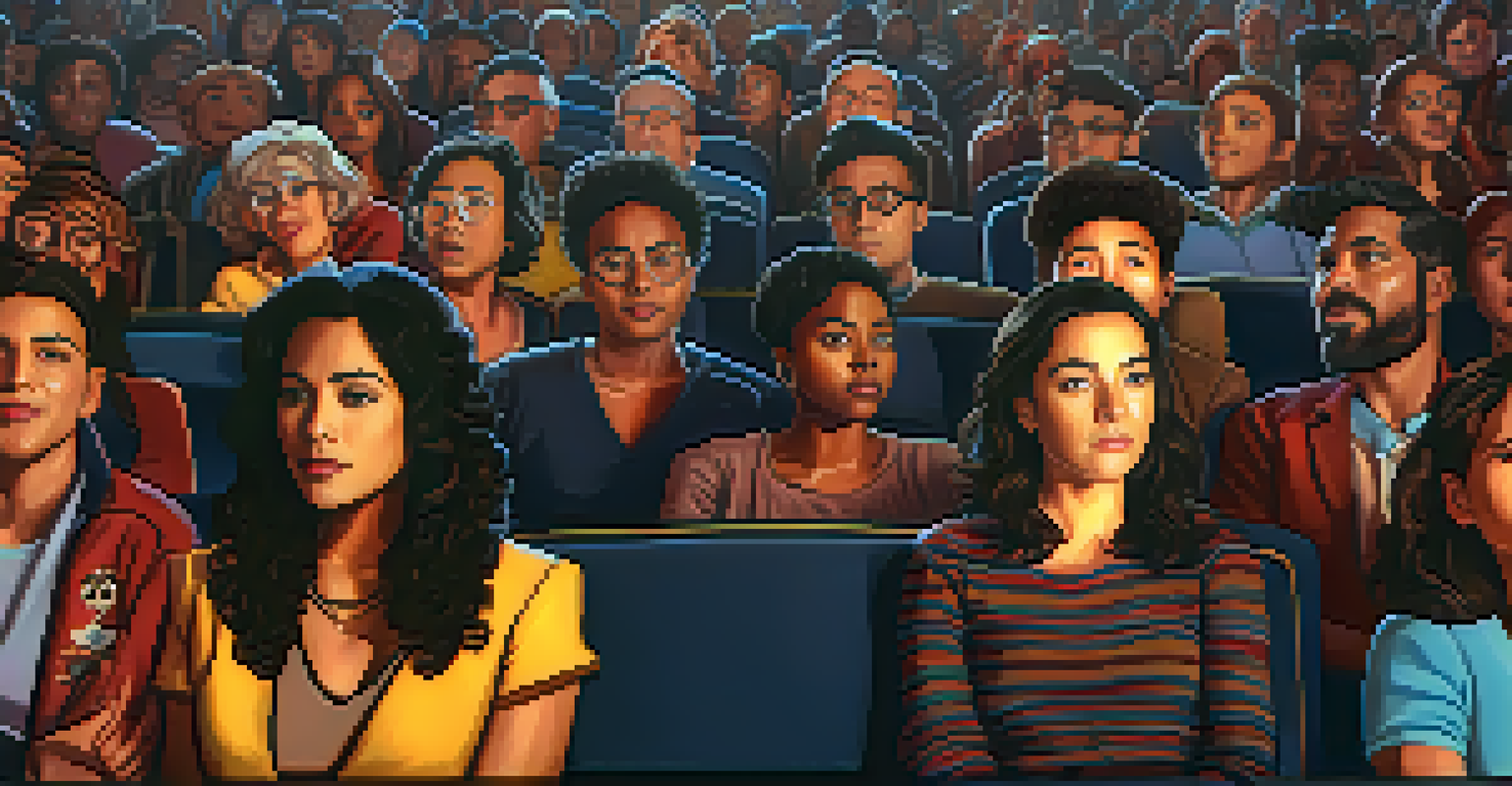Diversity in Hollywood: Changing Narratives of Cultural Identity

The Shift Towards Inclusivity in Hollywood
Hollywood has long been criticized for its lack of diversity, but recent years have seen a significant shift towards inclusivity. Filmmakers and studios are increasingly recognizing the importance of representing diverse backgrounds in storytelling. This change is not just about ticking boxes; it’s about creating authentic narratives that resonate with a broader audience.
Diversity isn’t a trend; it’s a necessity. It’s a reality that needs to be reflected in the stories we tell.
For instance, the success of films like 'Black Panther' and 'Crazy Rich Asians' demonstrates that audiences crave stories that reflect their experiences. These films broke box office records, proving that diversity is not just good for representation; it’s also good for business. As the industry embraces a wider array of voices, it opens the door for richer storytelling and deeper connections with viewers.
Moreover, this shift towards inclusivity is not limited to the screen. Behind the scenes, more diverse writers, directors, and producers are shaping the narratives we see. This holistic approach to diversity ensures that the stories told are not only varied but also authentic, fostering a new era of cultural identity in Hollywood.
Diverse Representation: More Than Just Tokenism
While Hollywood has made strides in diversity, it's crucial to differentiate between genuine representation and tokenism. Tokenism refers to the superficial inclusion of individuals from underrepresented groups, often without depth or meaningful roles. This practice can do more harm than good, as it reinforces stereotypes rather than dismantling them.

To combat tokenism, filmmakers are focusing on developing well-rounded characters that reflect the complexities of real life. For example, shows like 'Pose' highlight the experiences of LGBTQ+ people of color, showcasing their struggles and triumphs in a way that resonates with authenticity. Such portrayals invite audiences to empathize and connect, moving beyond mere representation.
Hollywood's Shift Towards Inclusivity
Recent years have seen Hollywood embracing diverse storytelling, leading to authentic narratives that resonate with broader audiences.
As audiences become more discerning, the demand for authentic stories continues to rise. This push forces studios to invest in narratives that honor the richness of diverse cultures, leading to a more accurate depiction of society as a whole. By prioritizing depth over surface-level inclusion, Hollywood can create a more inclusive narrative landscape.
The Impact of Streaming Services on Diversity
The rise of streaming services has transformed how stories are told and who gets to tell them. Platforms like Netflix, Hulu, and Amazon Prime have created opportunities for underrepresented voices to shine in ways traditional networks often overlook. This democratization of content allows for a wider range of narratives that resonate with diverse audiences.
The stories we tell matter, and they can change the world. We need to focus on authenticity and inclusivity in every aspect of storytelling.
For instance, shows like 'The Umbrella Academy' and 'Never Have I Ever' feature diverse casts and storylines that explore cultural identity in innovative ways. These platforms prioritize unique storytelling over traditional formulas, allowing creators to explore themes that reflect their own experiences. This shift not only enriches the content available but also encourages more creators from varied backgrounds to share their stories.
As streaming continues to dominate the entertainment landscape, it's crucial for these platforms to maintain their commitment to diversity. The success of diverse content on streaming services reinforces the notion that varied narratives are not just a trend but a necessary evolution in storytelling. This shift can lead to more inclusive representation across all forms of media.
Cultural Identity: A Complex Tapestry
Cultural identity is multi-faceted, encompassing race, ethnicity, gender, and socio-economic status. Hollywood's portrayal of cultural identity has historically been simplistic, often relying on stereotypes that fail to capture the complexity of individual experiences. However, recent films and shows are beginning to embrace this complexity, offering a richer tapestry of narratives.
Take, for instance, the groundbreaking series 'Master of None,' which delves into the nuances of being a first-generation immigrant in America. By exploring the intersectionality of identity, the show offers a more authentic perspective that resonates with many viewers. This approach not only broadens the scope of storytelling but also encourages audiences to reflect on their own identities.
Beyond Tokenism in Representation
Film and television creators are now prioritizing well-rounded characters and authentic stories, moving away from superficial inclusivity.
As more creators share their unique perspectives, the representation of cultural identity in Hollywood continues to evolve. This evolution fosters understanding and empathy, allowing audiences to engage with stories that reflect the real diversity of human experiences. Acknowledging the complexity of identity is essential for creating narratives that truly resonate.
The Role of Audience Demand in Changing Narratives
Audience demand plays a pivotal role in shaping Hollywood's narratives around diversity. As viewers increasingly call for authentic representation, studios are compelled to adapt and innovate. Social media has amplified these voices, making it easier for audiences to express their desires for more inclusive storytelling.
For example, the success of campaigns like #OscarsSoWhite highlighted the industry's lack of diversity, prompting a wave of criticism and a call for change. This grassroots movement led to greater awareness and a commitment to diversifying the talent pool in front of and behind the camera. As audiences hold studios accountable, the industry must respond to this demand for more meaningful representation.
Ultimately, audience engagement drives the evolution of narratives in Hollywood. As viewers continue to support diverse stories, studios will recognize the value of investing in inclusivity. This symbiotic relationship between creators and audiences is fundamental to fostering a richer and more diverse cinematic landscape.
The Importance of Storytelling in Cultural Understanding
Storytelling has always been a powerful tool for cultural understanding, and Hollywood is beginning to recognize its potential. Through film and television, audiences can gain insight into the experiences of others, fostering empathy and bridging cultural divides. These narratives serve as a mirror, reflecting the complexities of society while challenging stereotypes.
For instance, documentaries like '13th' explore the intersections of race and justice in America, prompting discussions about systemic issues. By presenting factual narratives alongside fictional stories, filmmakers can educate audiences while entertaining them. This approach not only informs but also inspires action and change.
Streaming's Role in Diverse Narratives
The rise of streaming services has opened doors for underrepresented voices, allowing for innovative storytelling that reflects diverse experiences.
As Hollywood continues to embrace storytelling as a means of cultural understanding, the potential for change becomes limitless. By highlighting diverse voices and experiences, the industry can contribute to a more informed and compassionate society. Ultimately, storytelling is a powerful catalyst for empathy and understanding in an increasingly interconnected world.
Looking Ahead: The Future of Diversity in Hollywood
As we look to the future, the momentum for diversity in Hollywood shows no signs of slowing down. With an increasing number of creators from diverse backgrounds entering the industry, the potential for innovative storytelling is boundless. This new wave of filmmakers is committed to pushing boundaries and challenging the status quo, paving the way for authentic narratives.
Moreover, as audiences continue to demand diverse representation, studios will likely invest more in projects that reflect the richness of our society. The success of diverse films and series not only highlights the importance of inclusion but also reinforces the idea that these stories resonate with viewers from all walks of life. This shift is crucial for fostering a more inclusive media landscape.

In conclusion, the future of diversity in Hollywood is bright. As cultural identities continue to evolve, so too will the stories we tell. By embracing diversity, Hollywood not only enriches its narratives but also fosters a deeper understanding of the world we live in, ensuring that everyone has a seat at the table.